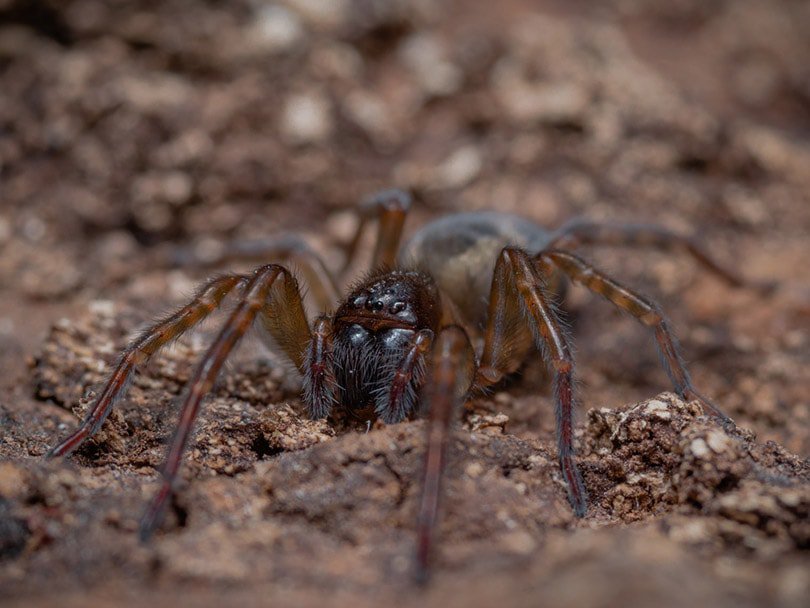If you are from Indiana, you know there are quite a few different species of spider that you can find in your garden or on your daily walks. Without help, it can be difficult to identify them all, so it will be hard to tell if they are poisonous or not. We’ve created a list of several of the species you are most likely to see in this part of the United States so you can learn a little more about them and, most importantly, which ones to avoid. For each entry, we’ll provide you with a short description so you can be more informed.

The 11 Spiders Found in Indiana
1. Star-Bellied Orb-Weaver
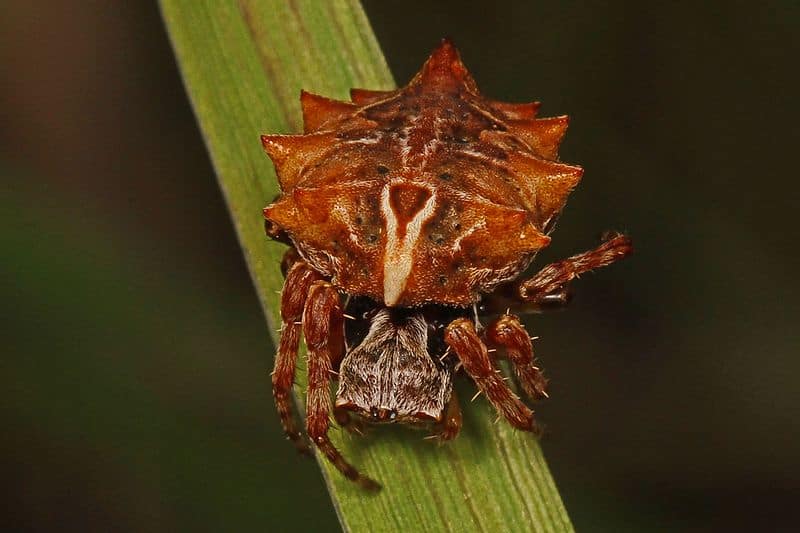
| Species: | Acanthepeira stellata |
| Longevity: | 1 year |
| Good to own as a pet?: | No |
| Legal to own?: | Yes |
| Adult size: | < 1 inch |
| Diet: | Carnivorous |
The star bellied orb weaver is an amazing spider with spikes on its abdomen that point in all directions. It’s usually an orange-brown color, and it is not dangerous to humans. Many consider its bit to be less painful than a bee sting unless there is an allergic reaction to the venom.
2. Black Lace-Weaver
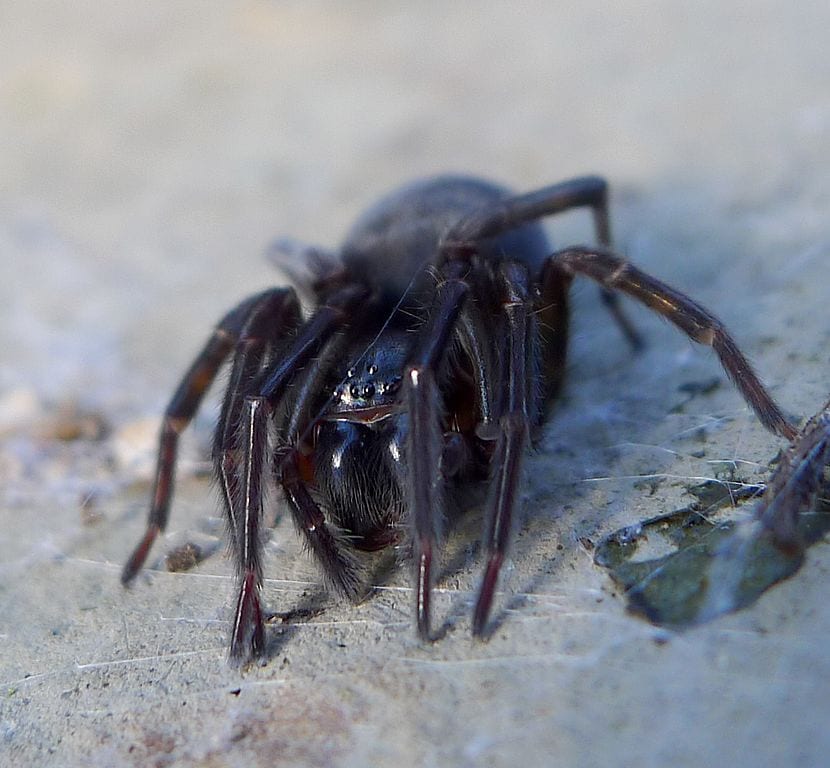
| Species: | Amaurobius ferox |
| Longevity: | 2 years |
| Good to own as a pet?: | No |
| Legal to own?: | Yes |
| Adult size: | < 1 inch |
| Diet: | Carnivorous |
The black lace weaver is a common nocturnal spider that is very dark in color. The abdomen is roundish with markings that resemble a ghoulish mask or skull. These spiders prefer to hide in dark areas of manufactured structures. It gets its name from the wooly web it creates.
3. Cross Orb-Weaver
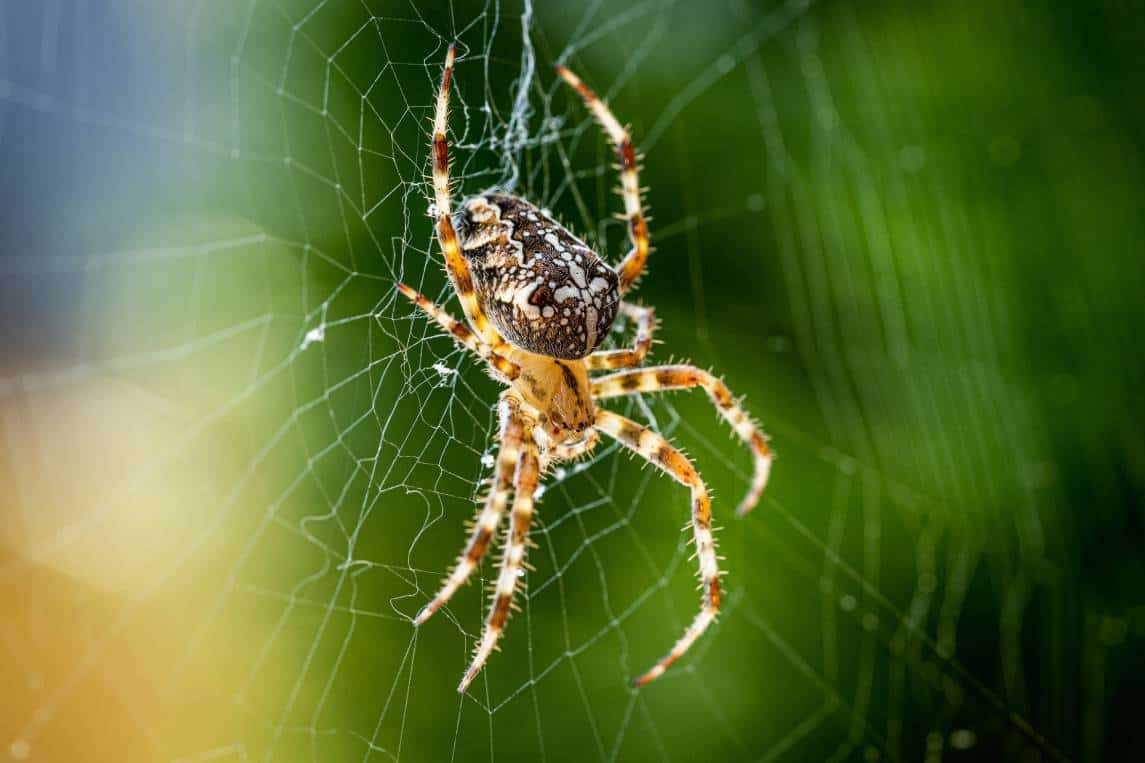
| Species: | Araneus diadematus |
| Longevity: | 1 year |
| Good to own as a pet?: | No |
| Legal to own?: | Yes |
| Adult size: | < 1 inch |
| Diet: | Carnivorous |
The cross orb-weaver is a small spider that can vary in color from light yellow to dark gray. It will have mottled white markings on its abdomen. Its silk is extremely strong, allowing it to create large elaborate webs more than two feet wide. These spiders do not have venom and pose no danger to humans.
4. Black and Yellow Garden Spider
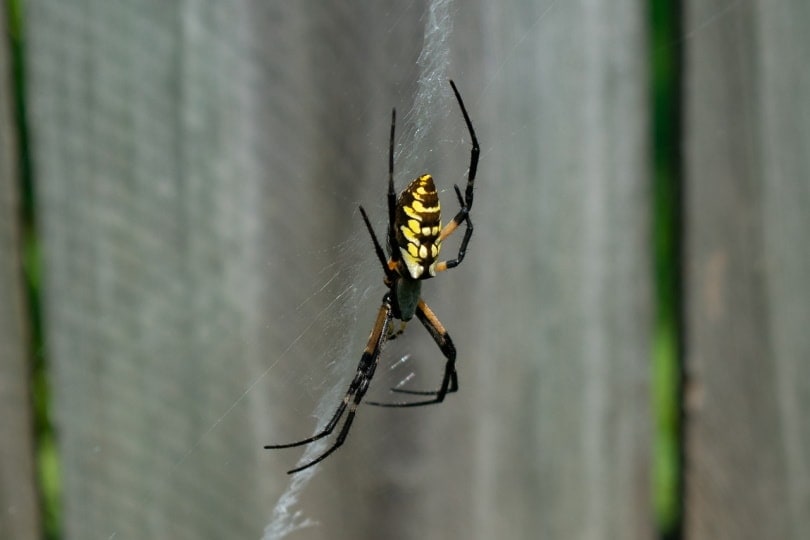
| Species: | Argiope aurantia |
| Longevity: | 1–3 years |
| Good to own as a pet?: | No |
| Legal to own?: | Yes |
| Adult size: | 1.5 inches |
| Diet: | Carnivorous |
The black and yellow garden spider is one of the larger species we have looked at so far, and it can grow to about 1.5 inches, not counting the legs. It’s common in much of the United States, including Indiana, and it prefers open, sunny fields where it can have protection from the wind. It has a black body with yellow markings on the abdomen. It’s not aggressive but may bite if you pick it up. Though the bite contains venom, it’s quite mild and usually only causes minor swelling.
5. Dark Fishing Spider
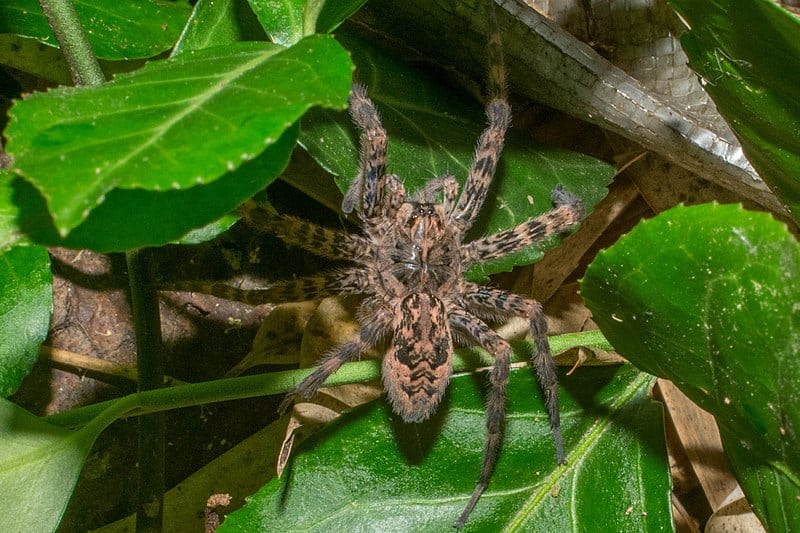
| Species: | Dolomedes tenebrosus |
| Longevity: | 1 year |
| Good to own as a pet?: | No |
| Legal to own?: | Yes |
| Adult size: | <1 inch |
| Diet: | Carnivorous |
The dark fishing spider is a species that will bite humans if it feels cornered but prefers to run away. The bite can be quite painful but usually does not require any medical attention and usually results in some minor swelling. It likes to stay on trees where it can easily spot prey. The males spontaneously die after mating, providing the female with the food she needs to care for the eggs.
6. Woodlouse Hunter
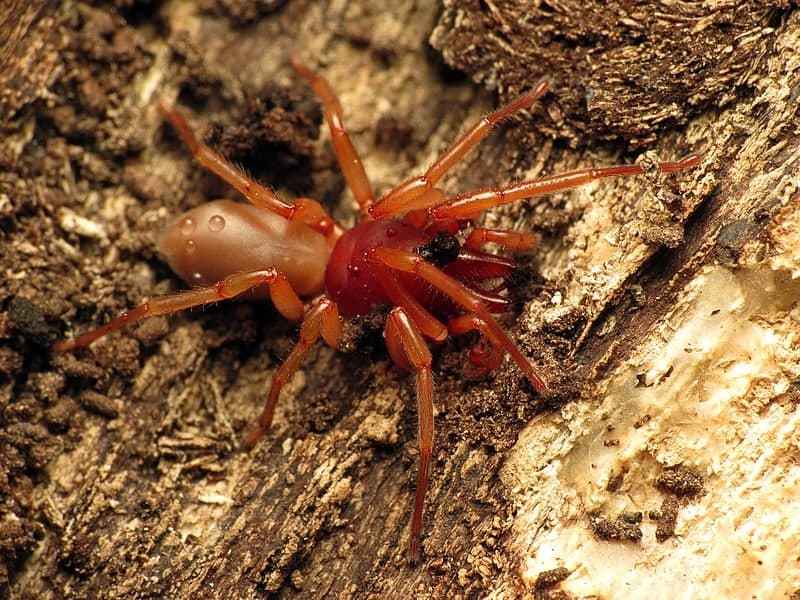
| Species: | Dysdera crocata |
| Longevity: | 2–3 years |
| Good to own as a pet?: | Yes |
| Legal to own?: | Yes |
| Adult size: | < 1 inch |
| Diet: | Carnivorous |
The woodlouse hunter is a species that preys primarily on woodlice. It has six eyes, unlike most other spiders that have eight and a dark red body and legs. It avoids humans at all costs, and you will have a tough time catching a glimpse of it outside captivity. It has huge fangs but poses no danger to humans. Even when it does bite, pain and swelling are minor with some localized itching.
7. Eastern Parson Spider
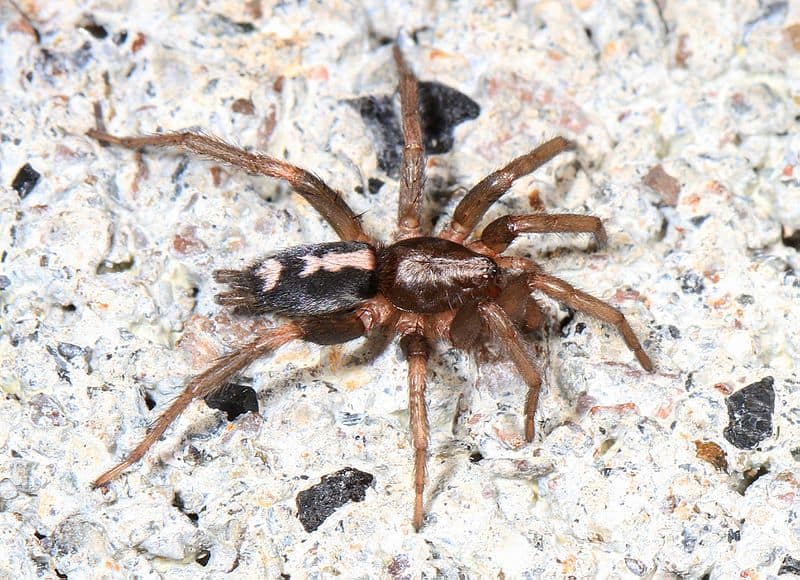
| Species: | Herpyllus ecclesiasticus |
| Longevity: | 1–2 years |
| Good to own as a pet?: | No |
| Legal to own?: | Yes |
| Adult size: | < 1 inch |
| Diet: | Carnivorous |
The eastern parson spider is a dark-colored spider with tiny hairs on the abdomen. It’s a nocturnal spider that spends its days under rocks or logs. It has a painful bite that may cause an allergic reaction in some people. It contains no toxins and shouldn’t produce any long-term problems.
8. Brown Recluse
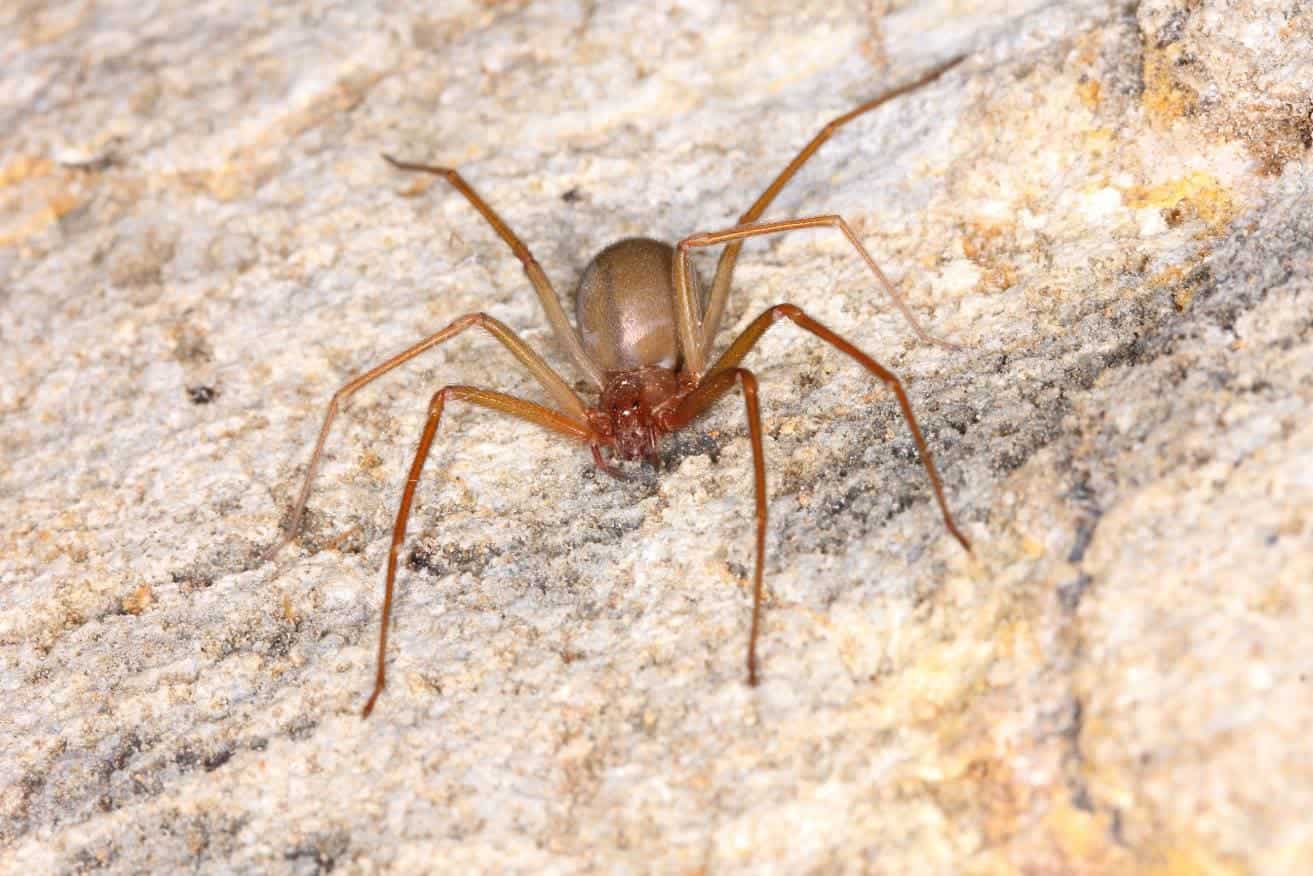
| Species: | Loxosceles reclusa |
| Longevity: | 1–2 years |
| Good to own as a pet?: | No |
| Legal to own?: | Yes |
| Adult size: | < 1 inch |
| Diet: | Carnivorous |
The brown recluse is a venomous spider that you can find in Indiana. This small spider can deliver a painful bite, but it is rarely aggressive. In fact, officials removed more than 2,000 of these from a single home in Kansas, and none of the four residents that lived there for several years got bit. However, we recommend avoiding these spiders at all costs and seeking medical attention if you get bit.
9. Hentz Orb-Weaver
| Species: | Neoscona crucifera |
| Longevity: | 1 year |
| Good to own as a pet?: | No |
| Legal to own?: | Yes |
| Adult size: | < 1 inch |
| Diet: | Carnivorous |
The Hentz orb-weaver is a nocturnal spider that rebuilds its web every day. It’s available in a wide variety of colors and patterns, and you can usually identify it by a cross-shaped marking on its abdomen. These spiders stay hidden during the day and pose no threat to humans.
10. Bold Jumper
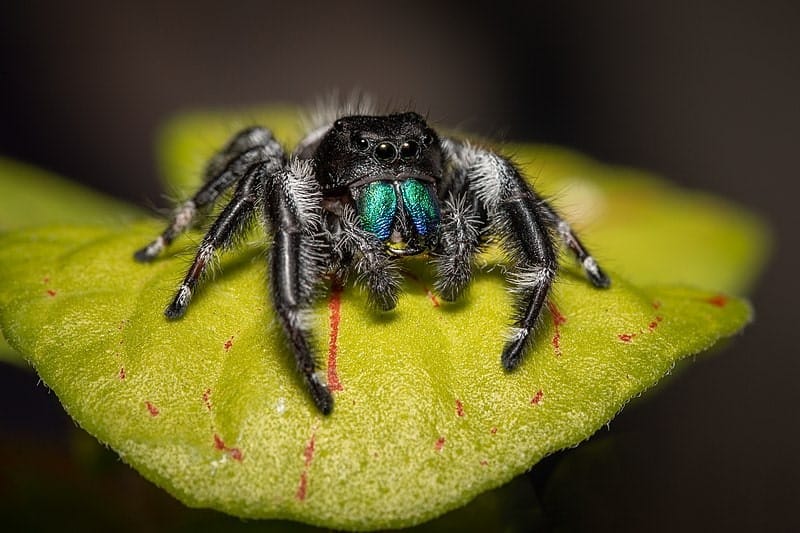
| Species: | Phidippus audax |
| Longevity: | 1–2 years |
| Good to own as a pet?: | No |
| Legal to own?: | Yes |
| Adult size: | < 1 inch |
| Diet: | Carnivorous |
The bold jumping spider has a large body and stereoscopic vision to help it be more effective at capturing its prey. It usually has a black body with yellow, red, or orange spots on its back. When the spots are red, it’s easy to mistake for a black widow. It rarely bites humans, but when it does, symptoms can vary, with most victims describing pain, itching, and swelling that subsided in a few days.
11. Triangulate Cobweb Spider
| Species: | Steatoda triangulosa |
| Longevity: | 1 year |
| Good to own as a pet?: | No |
| Legal to own?: | Yes |
| Adult size: | < 1 inch |
| Diet: | Carnivorous |
The triangulate cobweb spider is a brown-orange spider with thin legs. It has a triangle-shaped pattern on its abdomen, and it preys on several spiders known to hurt humans, including the brown recluse. It’s almost blind and relies heavily on vibration to learn about its environment. It’s never aggressive toward humans, and its bite is minor.
Poisonous Spiders in Indiana
The main spider you need to worry about while living or visiting Indiana is the brown recluse. These spiders can deliver a painful bite with excessive swelling that may cause an allergic reaction in some people. Luckily, these bites rarely result in a fatality, so there is no need to panic if you are attacked. Get to an emergency room as soon as possible for professional treatment.

Conclusion
When traveling around Indiana, the only spider you need to worry about is the brown recluse. However, as the name suggests, it prefers a dark and undisturbed habitat, like an attic, basement, or shed, so you are unlikely to see them unless you are doing some spring cleaning. If you like spiders, many of the others on this list are highly colorful, with well-crafted webs that are fun to watch and study.
We hope you have enjoyed reading over this list, and it has helped answer your questions. If you found some species you hadn’t heard about before, please share this article with your friends and family.
See also:
Featured Image Credit by YP_Macro, Shutterstock
